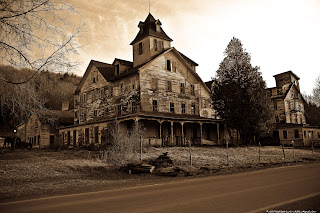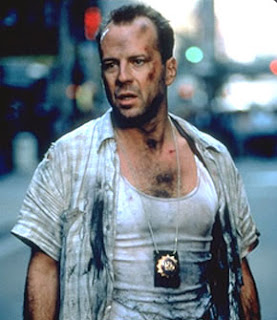In todays modern film industry there are so many
different types of genres out there, thriller being one of the most popular. This
is a genre that not only gets the viewer on the edge of their seat but it
builds suspension, anticipation and provides a sort of real-life feeling for
the viewer that no other genre could. The very reason that thrillers thrive in
the industry is that the person watching the film is almost included in the
action, they experience the drama “artificially” (as Hitchcock once said).
Conventions of a Thriller
A Quick Overview
A key element to a thriller film is the low-level
lighting and the eerie use of long powerful shadows that loom over an unknowing
victim. These are used to perhaps symbolise the dark side of a person/being and
add tension to the scene. Similarly mirrors will sometimes be shown for the
same effect, but furthermore they express the character’s inner self. Flashy, quick-cut editing helps not only
display a sense of urgency and action to the viewer but heighten that sense of
tension and insecurity. The quick-cuts can also be used to disorientate the
viewer of time and spatial awareness.
Flashbacks are sometimes included and in the
same way as quick-cut editing, these can disorientate and confuse the audience.
However they additionally give an insight into the characters memories/past. Sound
is another factor, as the muffled howling of a wolf in the distance will tell
you, it suddenly feels very lonely watching the film and the dramatic drip-drop
of a rusty old tap and creaking floorboards adds tension immediately to a room
or abandoned house.
Mise-en-Scene
Thriller
style films often use a similar setting to one another. This might be a haunted
house, a lone road or perhaps an alley on a dark night. These obviously differ according
to different sub-genres of thrillers and therefore, say, an action thriller may
be set in a busy city or likewise to give the notion of everyday life being
tampered with.


Cinematography
Mid-shots
are very commonly used, as they are a successful form of communicating the
characters expression and reactions to the audience. Close-up shots are used in
conjunction with these to focus on the subject that is causing the reaction,
for example a murder weapon. They also help to create tension within the shot
and build atmosphere by manipulating the composition of the shot. Furthermore
objects may be left out of the shot to develop the same effect.


Sound
Non-diegetic
sounds are ones that are not represented by an object in a film. Narration is
an example of this and is often used in thrillers at the beginning to set the
scene and introduce the different characters. Music is nearly always used to
create tension and suspense also, which reflects in the audience’s reactions.
Editing
A common theme in thrillers is fade to
black/white transitioning; these can be used to signify characters having
memory flashbacks. Often films use
straight-cut editing, as combined with short shots, a sense of action and urgency
can be developed. An example of this is the Bourne Trilogy fight scenes.

No comments:
Post a Comment